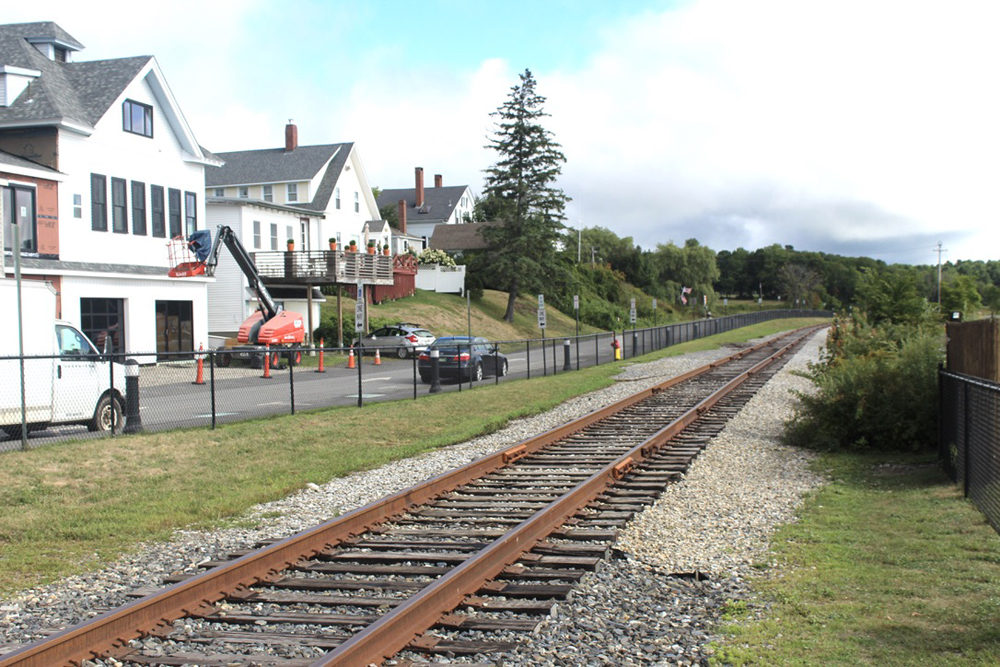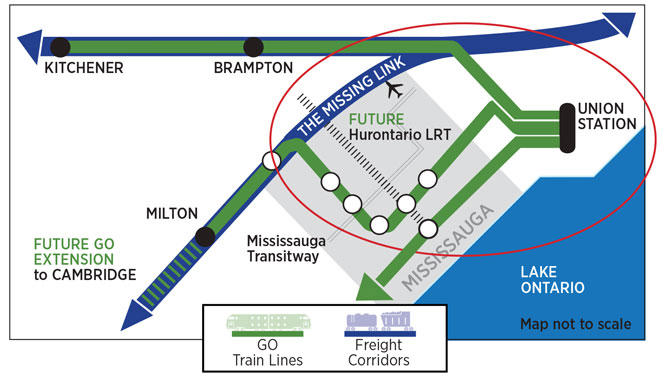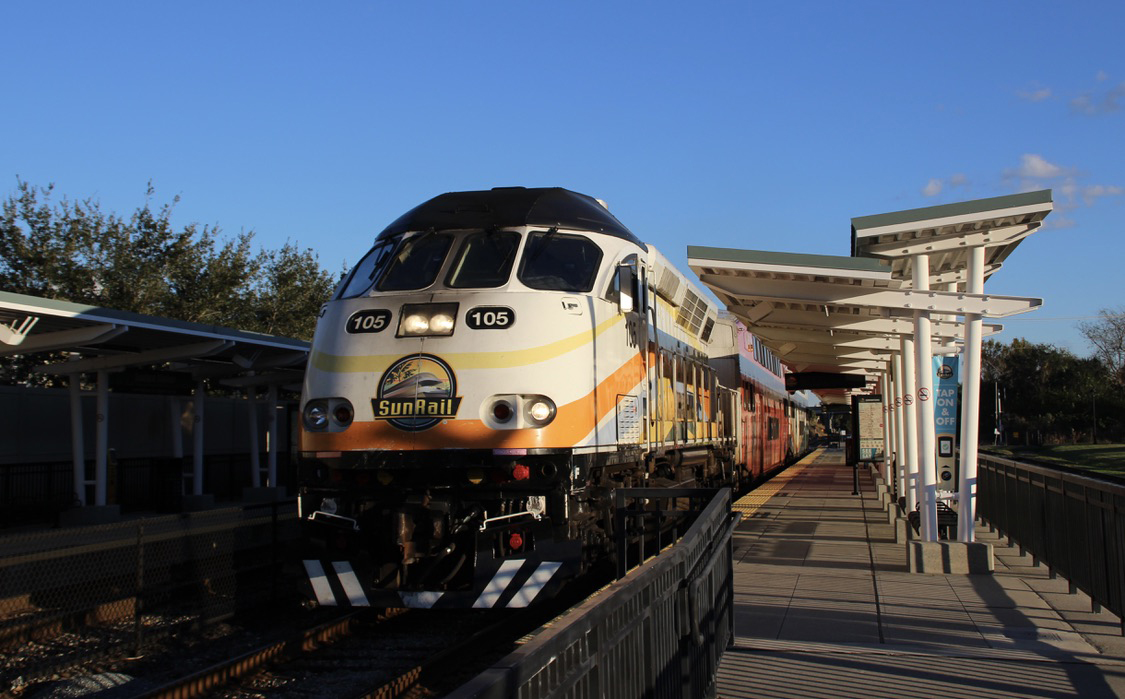The most visible differences will include longer trains with distributed power, the increased use of general purpose trains that combine different types of traffic, and locals that operate daily. Harder to see, but no less important, will be blocking changes that allow cars to bypass intermediate terminals.
“The goal of TOP21 is to make the entire network more efficient,” CEO Jim Squires said during the railroad’s investor day presentations on Monday.
Increased reliability also is a goal.
“Our new mantra is don’t promise anything you can’t deliver and then deliver what you promise,” Squires says.
Service will become more reliable, NS says, because the new operating plan is simpler to execute, day in and day out. It also will enable NS to bounce back more quickly from disruptions, such as the extreme cold and snowstorms that gripped its Northern Region last month, Chief Operating Officer Mike Wheeler says.
NS will blend different traffic types into general purpose trains. So that 60-mph intermodal traffic isn’t slowed when traffic is combined, NS has raised merchandise speeds to match on much of the railroad, up from 50 mph.
“We used to talk about as many as four separate networks. An intermodal network, an automotive network, carload, and unit train,” says John Friedmann, vice president of network planning and optimization. “And while it made certain intuitive sense to think of this this way, broken down along commodity lines, it really ignored the shared nature of our locomotive and our crew resources, as well as the limited nature of our line capacity.”
NS has begun combining traffic on some trains already.
Train 23G, an international intermodal train linking Louisville, Ky., and Norfolk, Va., pauses in Knoxville, Tenn., to pick up 15 or so loads of export coal also bound for the port.
Handling coal on an intermodal train means three things: The coal doesn’t sit in Knoxville until enough volume builds to run a unit train. The coal, and hoppers, move faster, reducing cycle time. And NS can drop train starts by shifting the bulk traffic into intermodal trains, which saves locomotives, fuel, and crews while opening up capacity on the main line.
In Winston-Salem, N.C., northbound carload traffic is taking a faster, shorter route by hitching a ride on an automotive train. Carload traffic gathered at Winston-Salem used to first run south to the hump yard at Linwood, N.C., where it would be classified and put on a northbound merchandise train.
The new arrangement saves about 100 miles, reduces car handling, and frees up capacity at Linwood.
“This is the kind of different thinking that we are infusing into our operating plan,” Friedmann says.
NS also will run the same number of trains in each direction every day to keep crews and power in balance.
The new plan also reduces NS’s dependence on major terminals by pre-blocking cars at local terminals and then relying on block-swapping en route.
NS is increasing local service frequency to daily across much of the system.
“What this does is it helps keep the system in motion at all times,” Friedmann says.
NS will measure the effectiveness of its operating changes using five key metrics.
Goals for 2021 built around the metrics include increasing train and engine crew productivity 34 percent measured by gross ton-miles per worker; increasing average train weight by 12 percent; boosting locomotive productivity 30 percent on a ton-mile basis; and reducing the number of cars online by 12 percent.
NS also created a service delivery index, which compares the railroad’s performance to 2018. The goal of the opaque metric, which measures compliance with customer commitments, is a 40-percent improvement by 2021.















If Mr. Squires wants to make his trains “longer”(as if they are not long enough), when are we the people going to demand legislation from our lawmakers, to help defray the cost of fuel by sitting at the RR crossing in our cars, trucks, or public safety vehicles waiting for his extremely long freight trains to end.
Thank You Eugene Hunter Harrison, you were such a visionary and look what you have done to our railroad system now. You have all of them more worried about shareholders than your own employees who break their necks and lose their lives to polish off your plan to make share value! I hope this doesnt put the railroad behind because if it does, it will never recover vs trucks.
Gary Miller
Look at the Wabash Railroad operation of the 1950’s and 1960’s and you will see almost exactly what is now called “precision scheduled railroading”. My dad C. C. Miller worked as engineer for the Wabash and N & W and I worked for the N & W as fireman and engineer. We experienced the change to the N & W operation of which none of our co-workers thought was very efficient.
I would like to see Trains Magazine write an article on the Wabash operation of this time period.
Yes, investors are certainly important and as a business man understand that. However, a business that continues to shrink or at least remains flat vs market share indicates there is something wrong with the operational model . The railroads are stripping low hanging fruit by selling or idling many of its operational assets. Doing such reduces flexibility. Meantime, the highways are bursting with truck traffic. If PSR is so great, by not use those efficiencies that have lowered costs to grab traffic that supposedly was out of reach because railroads costs where so high? It is this gap that I am critical of. A company, particularly a railroad, can not profit in the long run by cutting its way to “over” profitability. They are way beyond the STB of return on investment requirements. Clearly, some of the Class 1 railroads are on the cusp of relinquishing their common carrier service in my humble opinion. I am in good company with some of the comments Matt Rose has recently made regarding the topic.
The railroads thus far can do what they want until the STB has been crossed, but there is a risk that the railroads will further be diminished in the transportation scheme of things. Thus far, the railroads are lucky that there have been so many driver problems in the trucking industry that the railroads can offer mediocre service and still get some business in the intermodal market. Read the transportation journals and information and you will discover how many shippers think railroads service standards are poorly executed. Typically, railroad services are used when there is no other choice in many circumstances. About the only competitive advantage the railroads really have is moving volume. They will probably retain most of that type of business although coal is diminishing. All of this said, transportation is a tough business and the railroads must be as efficient as reasonably possible especially with “driverless” truck convoys on the horizon.
Let’s see; the CN is just now struggling mightily to recover from EHH’s wrecking crew approach. CP is still a disaster; the tragic wreck last week can be easily attributed to EHH’s drastic cutbacks on experienced personnel, i.e. road foremen, etc.; longer, underpowered trains running in extreme conditions with inadequate crew training. CSX still a mish-mash of its former never-fully-integrated and poorly-engineered infrastructure, now running long trains with inadequate power, and experiencing higher over-the-road breakdowns than any of the other class ones. And NS and UP want to emulate this? Let’s see how long it takes to run Conrail’s vaunted route over the Alleghenies into a menagerie of stalled trains, outlawed crews, and choked terminals. Bring back those who knew how to run a real railroad, not a Wall Street analyst’s computer game!
Don’t know PSR, but since EHH started the ball at CSX I’ve noticed 2 things. I live in southeast Louisiana. The CSX (old L & N) line to Mobile has seen a decrease in traffic. I go to New Orleans lt least weekly. On return I use the I-10 bridge over the industrial canal. From this bridge you can see the CSX yard. Within months of EHH taking office and implementing PSR the yard is half empty. Traffic driven away or to competitors.
On the other end NS old Southern line out of New Orleans is busier than ever (I work just blocks from it). Not only more trains but longer trains. On average they were 75-80 cars with a couple of 100+ cars daily. Now most are about 95 cars in length with many running 125, and some close to 140 (almost double the old lengths).
This is before PSR. How long will they get with PSR. I believe most sidings from New Orleans thru Hattiesburg to Meridian MS are only about 10,000 in length. Something’s gotta give.
Where are you Wick Moorman?Please come back!
Does PSR = Common sense ?
I wonder what Matt Rose thinks of this. Longer, heavier trains moving traffic more expeditiously;
I’ll believe it if I see it. I would not bet on It.
Mr Ash – The whole point of having a business is to “line the pockets” of the investors. Otherwise there would be no investors.
Makes no sense whatsoever to combine low value bulk commodity freight with higher value intermodal other than line the pockets of the investors. This is what is wrong with most of the industry. They are only bring value to themselves. Stop and switch out or pick up cars with intermodal time sensitive freight?! Intermodal shippers are looking for premium service. No wonder the margins on intermodal will continue to erode as PSR is expanded. Not all freight carries the same value and that is why they should not be mixed. A general merchandise train maybe a different story. No wonder NS did away with Triple Crown.
I am impressed that they have increased the speed of merchandise trains to 60 mph instead of reducing the speeds of intermodel trains to make these combined trains work together.
I’d keep bulk traffic segregated to be honest. Other than that combine; non-premium intermodal, carload, and automotive into one service unit. Sounds like we have a winner here NS let see how time reveals the strength and weaknesses in TOP21